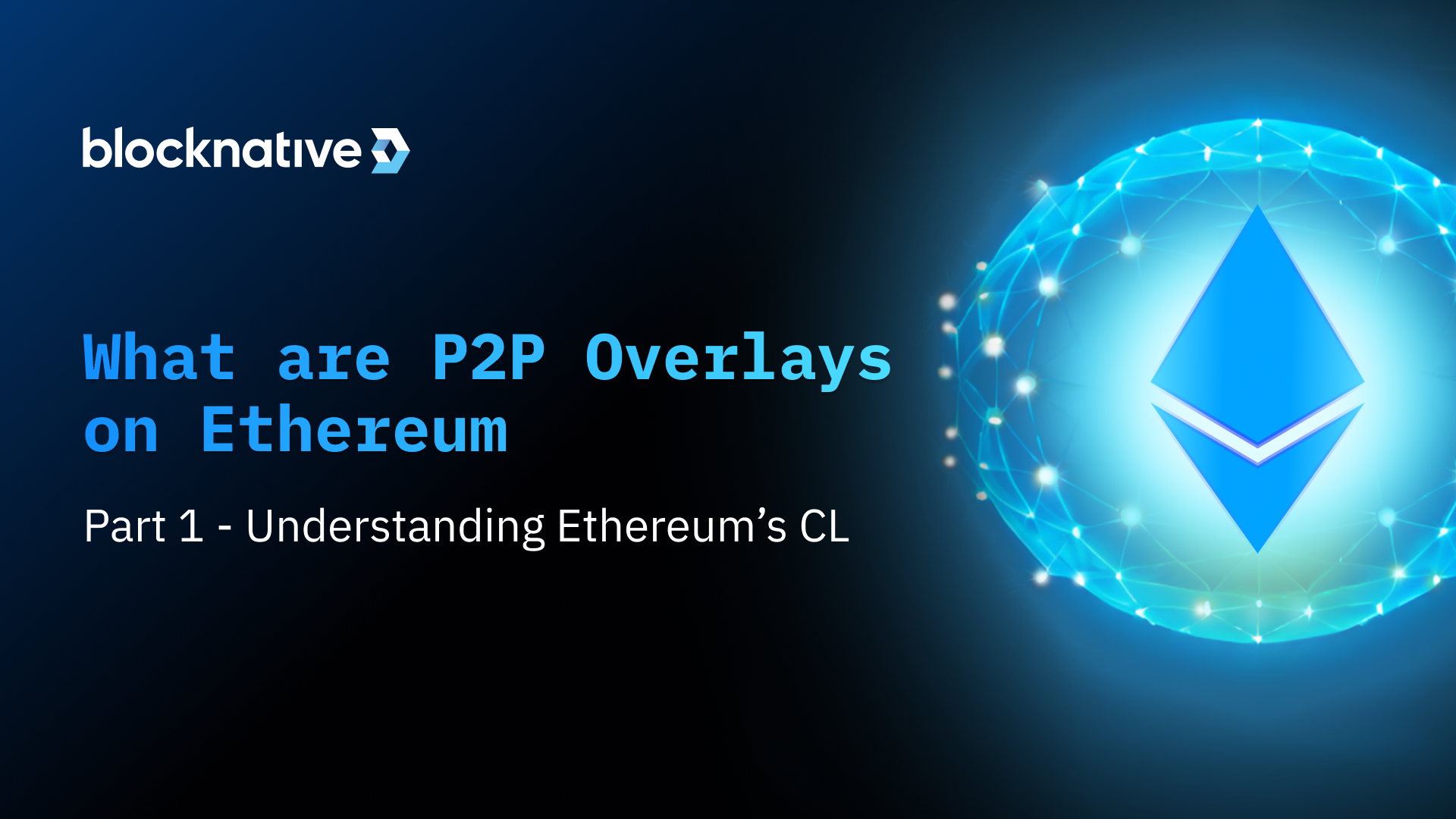In Ethereum's decentralized ecosystem, peer-to-peer (P2P) overlays play a critical role in facilitating communication and maintaining the integrity of the network. However, it is essential to distinguish between P2P overlays on the consensus layer and the execution layer. In this blog post, we will compare and contrast P2P overlays on both layers, explore why P2P overlays matter, delve into their structure, and examine their functions within the Ethereum ecosystem.
The difference between P2P overlays on the Consensus vs Execution Layer
P2P Overlays on the Consensus Layer:
At a high level, P2P overlays on Ethereum's consensus layer form the network topology connecting nodes involved in consensus formation. They enable validators to communicate, exchange attestations, and achieve agreement on the state of the blockchain. P2P overlays on the consensus layer focus on information dissemination, consensus formation, and ensuring the security and integrity of the network.
P2P Overlays on the Execution Layer:
On the execution layer, P2P overlays facilitate the interaction between nodes executing smart contracts and processing transactions. They enable decentralized applications (dapps) to communicate, share data, and execute transactions across the Ethereum network. P2P overlays on the execution layer are concerned with the distribution of computational tasks, data sharing, and supporting the execution of smart contracts.
Why P2P Overlays Matter
Understanding the distinctions and functions of P2P overlays on different layers is crucial for comprehending the underlying mechanics of Ethereum's decentralized architecture. P2P overlays are fundamental to Ethereum's decentralized nature and play a vital role in both the consensus and execution layers by enabling:
Decentralization and Trustlessness: P2P overlays ensure that Ethereum operates in a decentralized manner, eliminating the need for a central authority. They enable nodes to communicate directly, fostering trustlessness and preventing single points of failure or control.
Resilience and Security: P2P overlays enhance the resilience and security of the Ethereum network. By distributing information and computational tasks across multiple nodes, they make the network more robust against attacks, censorship, and failures of individual nodes.
Efficient Information Dissemination: P2P overlays facilitate the rapid and efficient propagation of information, such as transactions, blocks, and consensus-related messages. They optimize the flow of data across the network, reducing latency and enabling validators to reach consensus more effectively.
Taking a Deep Dive
Now that we have a grasp on the role P2P overlays play in the network, we can take a deeper dive into the lesser-known functions of consensus layer P2P overlays.
P2P overlays on the execution layer have already been widely discussed and analyzed since the release of the Ethereum yellow paper, however, after the MEV-Boost eclipse attack earlier this year, it became clear that few understood the intricacies of P2P overlays on the beacon network’s consensus layer. It is our objective to offer a partial remedy to this blind spot by means of this series: an introduction to the P2P overlay networks that underpin Ethereum’s consensus layer.
In Part 2 of this series, we will take a deep dive into the role P2P overlays play in attestation committees and slot inclusion. For a deeper technical discussion, you can also check out my Hitchhiker’s Guide to P2P Overlays in Ethereum and leave a comment directly in HackMD or reach out to our team on Discord.
Gas Extension
Blocknative's proven & powerful Gas API is available in a browser extension to help you quickly and accurately price transactions on 20+ chains.
Download the Extension



